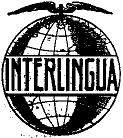Epigraph
"O members of parliaments throughout the world! Select ye a single
language for the use of all on earth, and adopt ye likewise a common
script. God, verily, maketh plain for you that which shall profit
you and enable you to be independent of others. He, of a truth, is
the Most Bountiful, the All-Knowing, the All-Informed. This will be
the cause of unity, could ye but comprehend it, and the greatest
instrument for promoting harmony and civilization, would that ye
might understand!" Bahá'u'lláh, (Kitáb-i-Aqdas 189)
The Pursuit of a Universal Language
For centuries, bright-eyed idealists have enthused in the creation of a universal one world language, the most famous of which is Esperanto. What becomes clear across these unifying projects is that breaking our tribalistic tendencies by transcending terrain entails a wild dance of a democracy of ideas. There are two elements for the constructed universal language that determine its flavor: morphemes and syntax. In the former case, the language draws source material from existing spoken languages; in the latter, rules are set up governing relationships between said meaning-packets.
A spectrum exists amongst constructed languages. There is the “naturalistic” variety, staying loyal to the vocabulary, grammar, and other characteristics of from natural languages and the “schematic” sort, that which is fabricated from ideals set about by the conn-lang’s creator(s).
A World Tour on Universal Languages
In Europe, Esperanto begat an off-spring by reformers seeking to simplify the movement, namely, Ido; next, a gentleman involved in Ido gave rise to Novial, a genderless SVO parlance in which verbs conjugate without agreement according to plurality, now dormant.
Also a former Esperantist, Edgar de Wahl developed Occidental, a naturalistic interlanguage under the motto “that international language is best which in every point offers the greatest facility to the greatest number” - later picked up and rebranded Interlingue by the Soviet Union in part to adjoin the nascent Interlingua, the American International Auxiliary Language Association’s systematic approach that prioritized immediate comprehensibility.
Finally, we would be remiss to forget mathmetician Giuseppe Peano’s simplification of Latin, Latino sine flexione, a sort of modern Latin Vulgare, the kind of which we will set out to construct in the following project.
To ask the question of the detriments of eurocentrism in this project is valid. As we speak, I write to you as in the effective “Lingua Franca” of the modern world in 2025 A.D., English. And indeed, status of the other continent’s world language development reflects the intractability of this endeavor.
In Africa, Afrihili, a constructed language designed in 1970 by Ghanaian historian K. A. Kumi Attobrah sought to unify the continent. By contrast, Guosa, proposed by Alex Igbinewek in 1967, sought specifically to unify the West African linguistic families: Hausa, Yoruba, and Igbo.
In the Americas, the colonial languages of English, French, Spanish and Portugese from north to south became de facto interlangs. In Oceania, sadly British colonizers erased many of the native languages as well. Regional creoles are of note in these continents: Kreyòl (Haiti), Tok Pisin (Papua New Guinea), Melanesian (Solomon Islands) and Bislama (Vanuatu).
In Asia, divided between Hindustan and the far East, holds the majority of the world population, but no unifiyng projects are well known; Sanskrit (संस्कृत) and Classical Chinese (文言) served as lingua francas in the ancient world, linguistic powerhouses akin to Latin.
 |
 |
||||
| Esperanto, Ido, Interlingua, Latino sine flexione, Novial, Occidental | |||||
Des Créoles
If we were merge all world languages, we should understand how languages are merged naturally.
We employ the term creolization, of 16th century Carribean origin, to refer to the process by which languages blend, by convention by cross-cultural commerce. Therein, two languages form a “contact language” blend as one donor language, the superstrate, donates loanwords and calques into a receiving language, the substrate, in a relexification process. The initial admixture forms a pidgin, an organic bare-bones language, out of said patois. By their nature pidgins lack scholarly and global recognition, the most notable of which may be Naijá, a lingua franca across Nigeria. Sociolinguists theorize that a creole develops from those children who grow up speaking a pidgin, developing a more supple vocabulary with more precise grammar.
All the World’s a Stage
As an aside, languages can be classified in a spectrum depending on how meaning is conveyed: analytic and synthetic. Analytic structure relies primarily on word order, prepositions, and separate words to convey grammatical relationships i.e. English,Chinese,Vietnamese. Synthetic structure uses inflection, conjugation, and morphological changes within words to express grammatical relationships i.e. Latin,Russian,Turkish.
Structural features:
- Simplified grammar compared to parent languages
- Relatively fixed word order (often Subject-Verb-Object)
- Minimal inflection
- Analytic rather than synthetic structure,
- Vocabulary drawn primarily from one “superstrate” language with influences from “substrate” languages
Formation process:
- Emerge from pidgin languages that become nativized
- Develop in contact situations like trade, colonization, or plantation settings
- Undergo rapid grammatical expansion when children acquire them as first languages